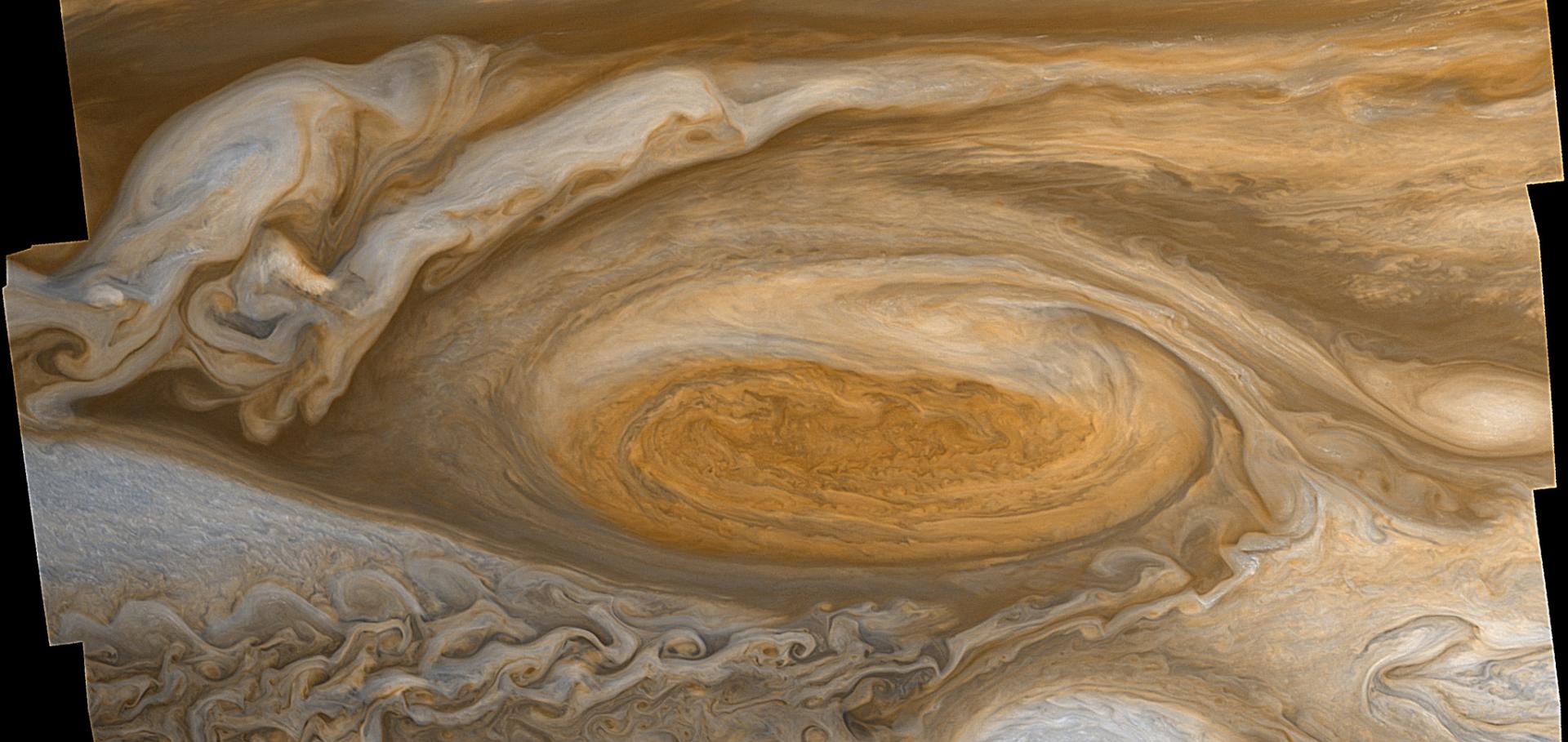Comparative terrestrial atmospheric circulation regimes in simplified global circulation models. Part I: From cyclostrophic super‐rotation to geostrophic turbulence
Quarterly Journal of the Royal Meteorological Society Wiley 144:717 (2018) 2537-2557
Abstract:
The regimes of possible global atmospheric circulation patterns in an Earth‐like atmosphere are explored using a simplified Global Circulation Model (GCM) based on the University of Hamburg's Portable University Model for the Atmosphere (PUMA)—with simplified (linear) boundary‐layer friction, a Newtonian cooling scheme, and dry convective adjustment (designated here as PUMA‐S). A series of controlled experiments is conducted by varying planetary rotation rate and imposed equator‐to‐pole temperature difference. These defining parameters are combined further with each other into dimensionless forms to establish a parameter space in which the occurrences of different circulation regimes are mapped and classified. Clear, coherent trends are found when varying planetary rotation rate (thermal Rossby number) and frictional and thermal relaxation time‐scales. The sequence of circulation regimes as a function of parameters, such as the planetary rotation rate, strongly resembles that obtained in laboratory experiments on rotating, stratified flows, especially if a topographic β‐effect is included in those experiments to emulate the planetary vorticity gradients in an atmosphere induced by the spherical curvature of the planet. A regular baroclinic wave regime is also obtained at intermediate values of thermal Rossby number and its characteristics and dominant zonal wavenumber depend strongly on the strength of radiative and frictional damping. These regular waves exhibit some strong similarities to baroclinic storms observed on Mars under some conditions. Multiple jets are found at the highest rotation rates, when the Rossby deformation radius and other eddy‐related length‐scales are much smaller than the radius of the planet. These exhibit some similarity to the multiple zonal jets observed on gas giant planets. Jets form on a scale comparable to the most energetic eddies and the Rhines scale poleward of the supercritical latitude. The balance of heat transport varies strongly with Ω∗ between eddies and zonally symmetric flows, becoming weak with fast rotation.A Chorus of the WindsOn Saturn!
JOURNAL OF GEOPHYSICAL RESEARCH-PLANETS 123:5 (2018) 1007-1011
Wave number selection in the presence of noise: Experimental results
Chaos AIP Publishing 28:5 (2018) 053110
Abstract:
In this study, we consider how the wave number selection in spherical Couette flow, in the transition to azimuthal waves after the first instability, occurs in the presence of noise. The outer sphere was held stationary, while the inner sphere rotational speed was increased linearly from a subcritical flow to a supercritical one. In a supercritical flow, one of two possible flow states, each with different azimuthal wave numbers, can appear depending upon the initial and final Reynolds numbers and the acceleration value. Noise perturbations were added by introducing small disturbances into the rotational speed signal. With an increasing noise amplitude, a change in the dominant wave number from m to m ± 1 was found to occur at the same initial and final Reynolds numbers and acceleration values. The flow velocity measurements were conducted by using laser Doppler anemometry. Using these results, the role of noise as well as the behaviour of the amplitudes of the competing modes in their stages of damping and growth were determined.Atmospheric dynamics of terrestrial planets
Chapter in Handbook of Exoplanets, Springer (2018)
Abstract:
The solar system presents us with a number of planetary bodies with shallow atmospheres that are sufficiently Earth-like in their form and structure to be termed “terrestrial.” These atmospheres have much in common, in having circulations that are driven primarily by heating from the Sun and radiative cooling to space, which vary markedly with latitude. The principal response to this forcing is typically in the form of a (roughly zonally symmetric) meridional overturning that transports heat vertically upward and in latitude. But even within the solar system, these planets exhibit many differences in the types of large-scale waves and instabilities that also contribute substantially to determining their respective climates. Here we argue that the study of simplified models (either numerical simulations or laboratory experiments) provides considerable insights into the likely roles of planetary size, rotation, thermal stratification, and other factors in determining the styles of global circulation and dominant waves and instability processes. We discuss the importance of a number of key dimensionless parameters, for example, the thermal Rossby and the Burger numbers as well as nondimensional measures of the frictional or radiative timescales, in defining the type of circulation regime to be expected in a prototypical planetary atmosphere subject to axisymmetric driving. These considerations help to place each of the solar system terrestrial planets into an appropriate dynamical context and also lay the foundations for predicting and understanding the climate and circulation regimes of (as yet undiscovered) Earth-like extrasolar planets. However, as recent discoveries of “super-Earth” planets around some nearby stars are beginning to reveal, this parameter space is likely to be incomplete, and other factors, such as the possibility of tidally locked rotation and tidal forcing, may also need to be taken into account for some classes of extrasolar planet.Descent rate models of the synchronization of the Quasi-Biennial Oscillation by the annual cycle in tropical upwelling
Journal of the Atmospheric Sciences American Meteorological Society 75:7 (2018) 2281-2297


